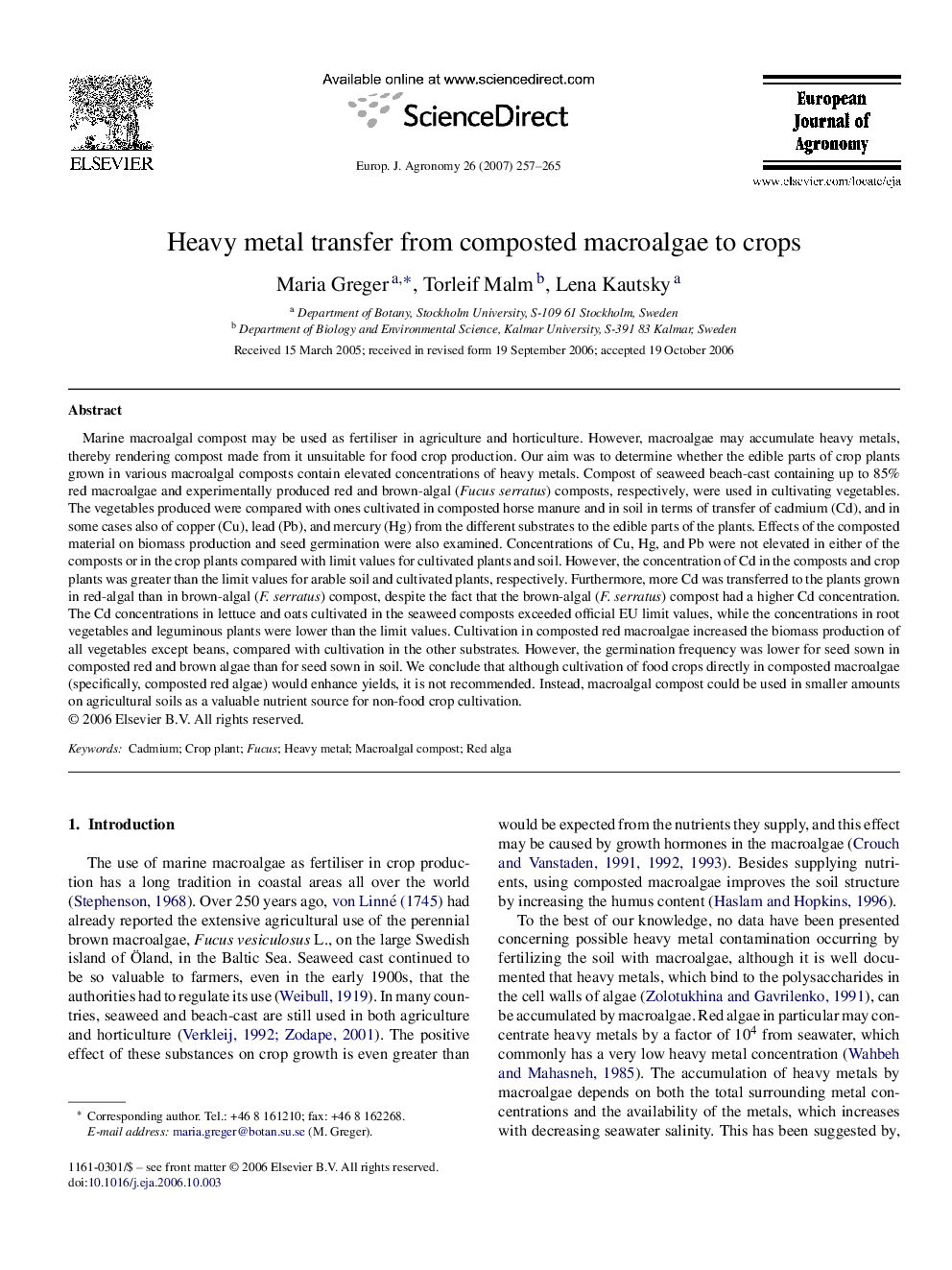| کد مقاله | کد نشریه | سال انتشار | مقاله انگلیسی | نسخه تمام متن |
|---|---|---|---|---|
| 4509641 | 1624525 | 2007 | 9 صفحه PDF | دانلود رایگان |

Marine macroalgal compost may be used as fertiliser in agriculture and horticulture. However, macroalgae may accumulate heavy metals, thereby rendering compost made from it unsuitable for food crop production. Our aim was to determine whether the edible parts of crop plants grown in various macroalgal composts contain elevated concentrations of heavy metals. Compost of seaweed beach-cast containing up to 85% red macroalgae and experimentally produced red and brown-algal (Fucus serratus) composts, respectively, were used in cultivating vegetables. The vegetables produced were compared with ones cultivated in composted horse manure and in soil in terms of transfer of cadmium (Cd), and in some cases also of copper (Cu), lead (Pb), and mercury (Hg) from the different substrates to the edible parts of the plants. Effects of the composted material on biomass production and seed germination were also examined. Concentrations of Cu, Hg, and Pb were not elevated in either of the composts or in the crop plants compared with limit values for cultivated plants and soil. However, the concentration of Cd in the composts and crop plants was greater than the limit values for arable soil and cultivated plants, respectively. Furthermore, more Cd was transferred to the plants grown in red-algal than in brown-algal (F. serratus) compost, despite the fact that the brown-algal (F. serratus) compost had a higher Cd concentration. The Cd concentrations in lettuce and oats cultivated in the seaweed composts exceeded official EU limit values, while the concentrations in root vegetables and leguminous plants were lower than the limit values. Cultivation in composted red macroalgae increased the biomass production of all vegetables except beans, compared with cultivation in the other substrates. However, the germination frequency was lower for seed sown in composted red and brown algae than for seed sown in soil. We conclude that although cultivation of food crops directly in composted macroalgae (specifically, composted red algae) would enhance yields, it is not recommended. Instead, macroalgal compost could be used in smaller amounts on agricultural soils as a valuable nutrient source for non-food crop cultivation.
Journal: European Journal of Agronomy - Volume 26, Issue 3, April 2007, Pages 257–265